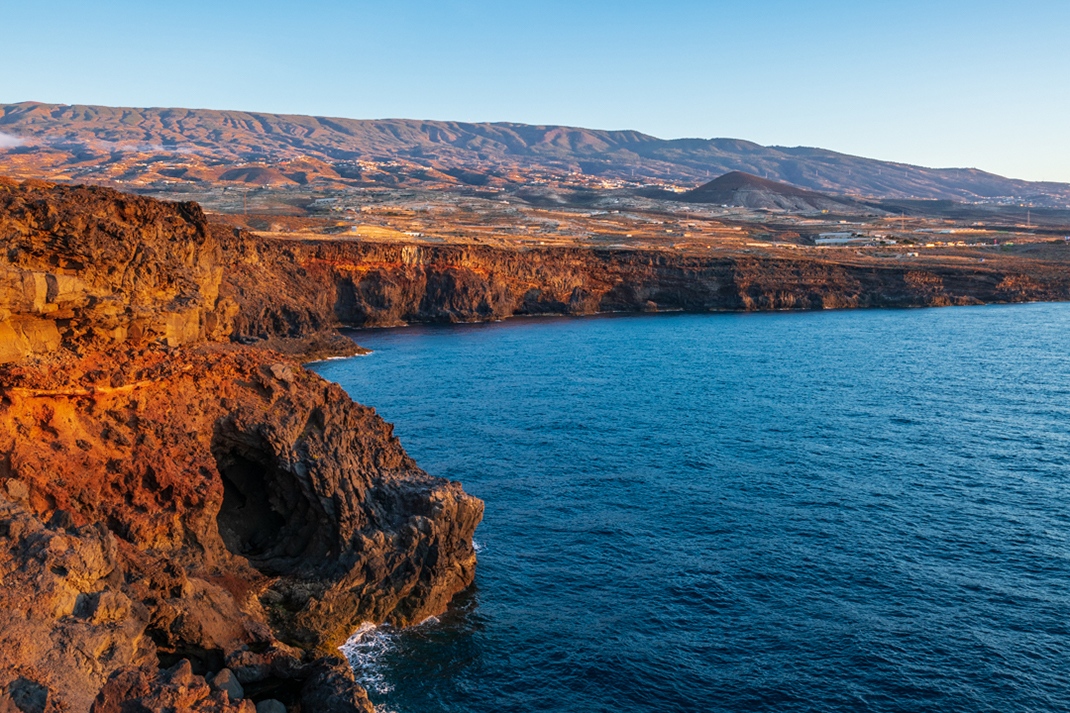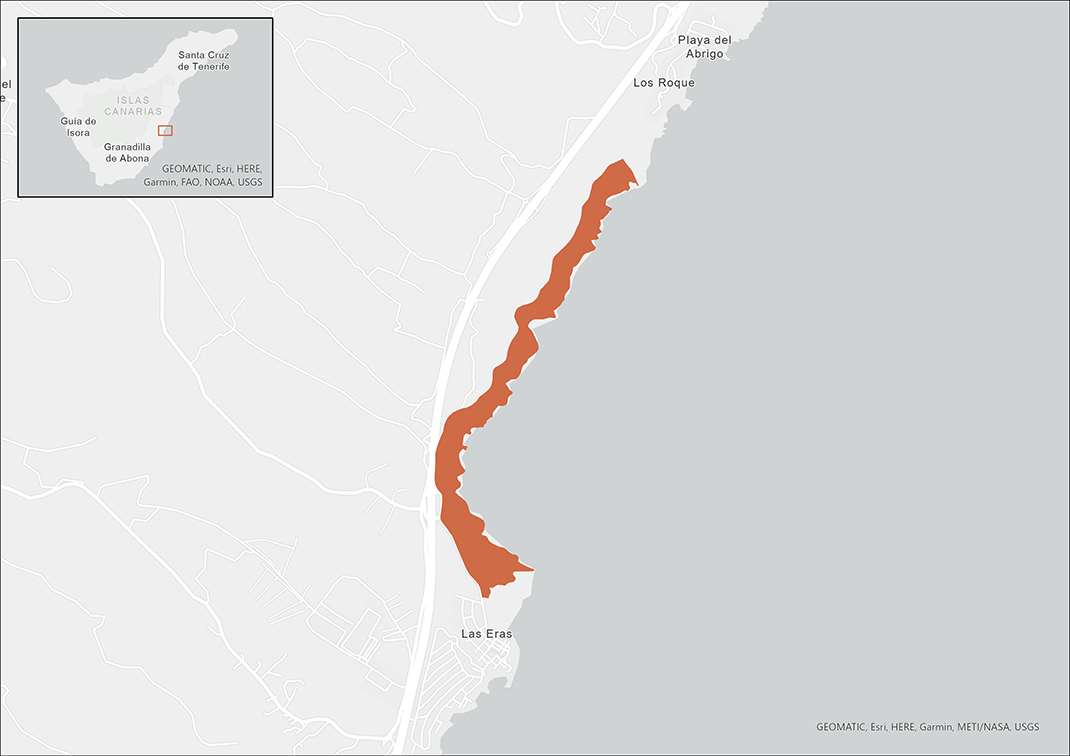Plan your next adventure
Tailor your own route along Tenerife’s trails quickly and easily..
Go to planner
This protected natural area stretches along a coastal platform with gentle slopes and small ravines which become steeper and deeper as they get closer to the coast.
These ravines end at the cliffs (“acantilado”) that lend their name to this place and rise up to 40 metres in height.
Recommended time to visit: All year-round.
The landscape of La Hondura is shaped by 3 main factors:

The plant life here has adapted to the extreme conditions of aridity and salinity typical of the island’s coastline.
The most common species are tabaibadulce (Euphorbia balsamifera), uvilla de mar (Tetraenafontanesii), lechuga de mar (Astydamialatifolia), tomillo de mar (Frankeniacapitata), salado (Schizogynesericea) and siempreviva de mar (Limoniumpectinatum).
But among them all there is one that stands out for its rarity and extreme fragility: the piña de mar (Atractylispreauxiana), classified as an endangered species. Here it clings to the steep sides and ledges of the cliffs, sheltered from the trampling of walkers, and forms one of the largest and best-preserved known populations of this species on Tenerife.
Among the vertebrates, you will find two species of reptiles, the Tenerife lizard and the Tenerife gecko.
However, the most numerous species of wildlife, despite the extreme conditions, are the birds. Here you can see two endemic Macaronesian species, the Berthelot’s pipit and the plain swift, as well as other birds such as Scopoli’s shearwaters, kestrels, yellow-legged gulls, and spectacled warblers.

38.2 ha (0.02% of the island).
Tabaibadulce (Euphorbia balsamifera), uvilla de mar (Tetraenafontanesii), lechuga de mar (Astydamialatifolia), tomillo de mar (Frankeniacapitata), salado (Schizogynesericea), siempreviva de mar (Limoniumpectinatum), piña de mar (Atractylispreauxiana), Tenerife lizard, Tenerife gecko, Berthelot’s pipit, plain swift, Scopoli’s shearwater, kestrel, yellow-legged gull, spectacled warbler.
Tabaibal (Euphorbia), cliff.
To consult permits for use and updated regulations for this Protected Natural Area, visit the official website of the Government of the Canary Islands.

Tailor your own route along Tenerife’s trails quickly and easily..
Go to planner